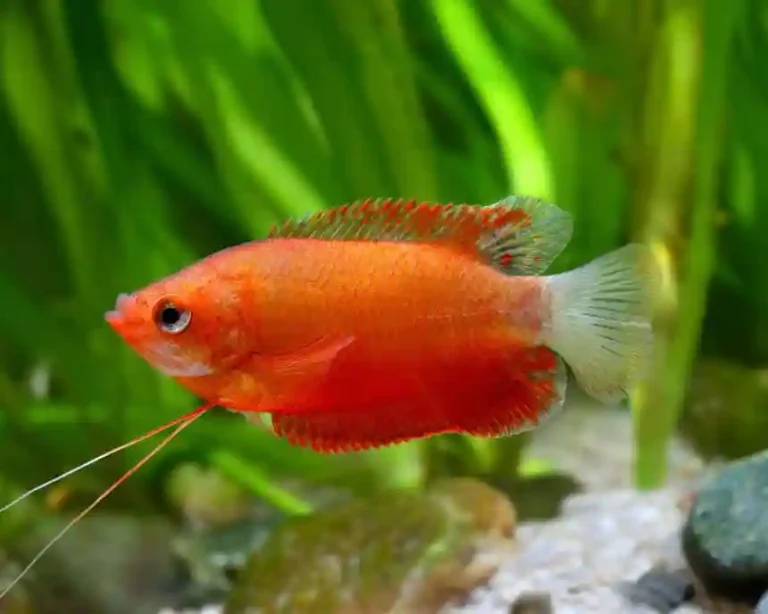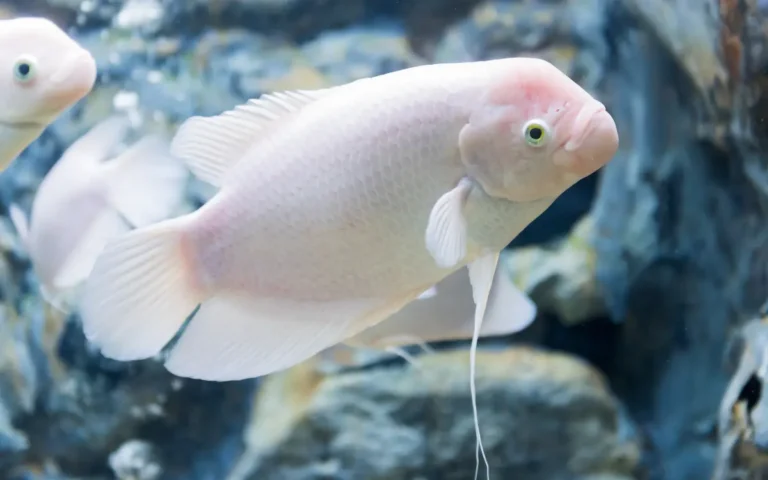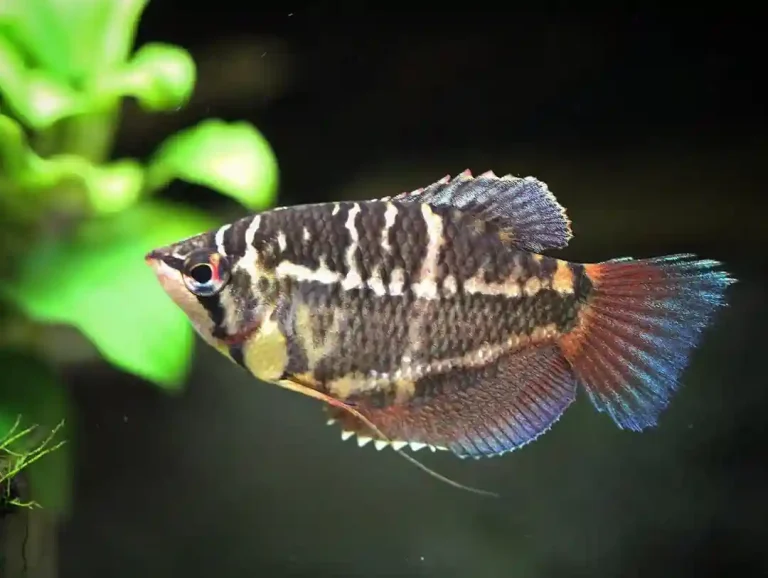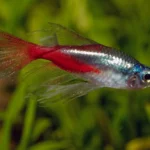Crown Tail Bettas are one of the most eye-catching Betta fish varieties, known for their dramatic, spiky tails that resemble a crown. These elegant freshwater fish are a favorite for both beginner and advanced aquarists due to their unique look and manageable care needs. In this guide, you’ll learn everything you need to keep your Crown Tail Betta healthy, active, and thriving.
What Is a Crown Tail Betta?
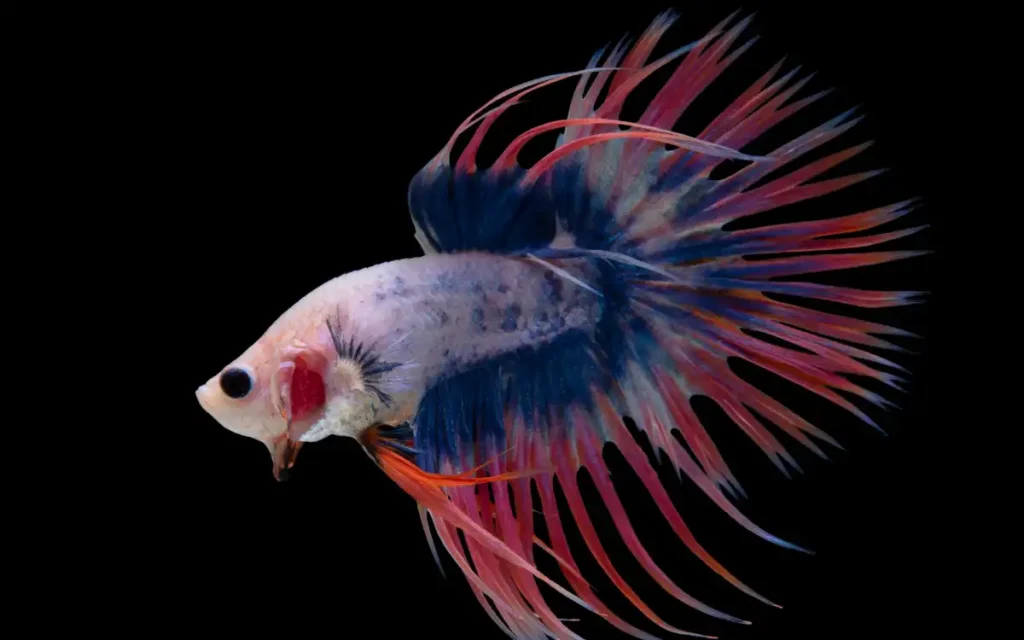
The Crown Tail Betta, or Betta splendens, is a popular variation bred for its impressive tail that features extended rays with little or no webbing in between—giving it a crown-like appearance. Originally developed in Indonesia in the late 1990s, this Betta quickly became a standout in the aquarium hobby.
Unlike the Veil Tail Betta with its flowing downward tail or the Plakat Betta with short fins, Crown Tails are spiky and dramatic—making them a striking addition to any tank.
Crown Tail Betta Appearance
Crown Tails come in a wide range of colors—red, blue, purple, yellow, white, and even multi-colored or marble patterns. Males typically have longer, more elaborate tails than females, which are slightly shorter and rounder.
Their defining trait is the reduced webbing between tail rays, forming sharp points or spikes that radiate outward. This unique look requires a bit of extra care to keep their fins in top condition.
Ideal Tank Setup for Crown Tail Bettas
While Bettas can survive in smaller containers, Crown Tails deserve a clean, well-filtered aquarium to prevent fin damage and stress.
- Tank Size: Minimum 5 gallons (10 gallons recommended for more stability)
- Heater: Yes, to keep temperature steady
- Filter: Gentle filter to avoid strong currents
- Substrate: Soft gravel or sand
- Decor: Smooth décor, caves, and silk or live plants (sharp edges can tear their fins)
👉 For setup tips, check out our Betta Fish Tank Setup guide.
Water Conditions and Parameters
Maintaining clean and stable water is key to Crown Tail health. Sudden changes can stress them and lead to illness.
Ideal Water Parameters:
Parameter Recommended Range Temperature 76–82°F (24–28°C) pH 6.5–7.5 Hardness 3–5 dGH (soft to medium) Ammonia/Nitrites 0 ppm Nitrates <20 ppm
Perform partial water changes (25–30%) weekly and monitor water quality with a reliable test kit.
What Do Crown Tail Bettas Eat?
Crown Tail Bettas are carnivores and need a protein-rich diet to maintain vibrant colors and energy.
- Staple Food: High-quality Betta pellets
- Supplements: Frozen or live brine shrimp, bloodworms, daphnia
- Feeding Frequency: 1–2 times per day, only what they can eat in 2 minutes
- Avoid: Overfeeding or feeding them flakes meant for other tropical fish
A varied diet helps prevent bloating and keeps their immune system strong.
Crown Tail Betta Behavior and Personality
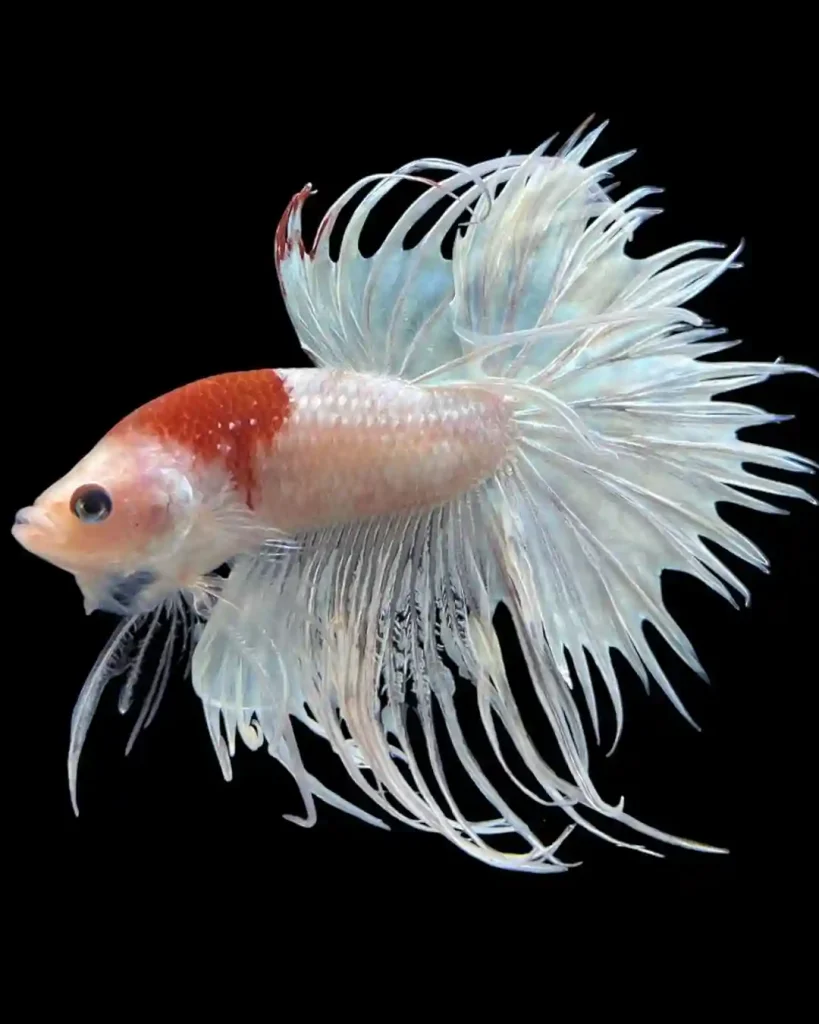
These Bettas are curious, alert, and intelligent. Males are territorial and may flare their gills or spread their fins when seeing a mirror or another male. They also build bubble nests near the water surface—a sign that your Betta is healthy and possibly ready to breed.
Crown Tail Betta Tank Mates
Crown Tails are best kept solo, especially males. However, if you want to create a community tank, choose peaceful fish that don’t nip fins or trigger aggression.
Compatible Tank Mates:
- Corydoras catfish
- Nerite snails
- Kuhli loaches
- Ember tetras (caution—schooling fish can stress Bettas if too fast)
Avoid pairing with fin-nippers like barbs or guppies. Never house two male Bettas together.
👉 Explore more ideas in our Betta Fish Tank Mates article.
Health Issues to Watch For
Crown Tail Bettas are prone to fin rot due to their delicate fins. Common health problems include:
- Fin Rot: Caused by poor water quality
- Tail Biting: Can happen if the Betta is bored or stressed
- Ich or Velvet: Parasitic infections visible as white or gold spots
Keep your water clean and stress levels low. Read more in our Freshwater Fish Diseases guide.
Breeding Crown Tail Bettas
Breeding Bettas takes preparation and patience.
- Use a separate breeding tank (at least 10 gallons)
- Introduce the female after the male builds a bubble nest
- Watch closely—remove the female after egg-laying to avoid aggression
Once the male cares for the eggs and fry hatch, he should be removed after a few days. Crown Tails can be selectively bred for more defined spikes.
Lifespan and Size
With proper care, Crown Tail Bettas typically grow up to 2.5–3 inches in length and live 3 to 5 years in captivity. Some live even longer with pristine water and a balanced diet.
Final Tips for Crown Tail Betta Owners
- Always use a lid—they’re jumpers!
- Avoid tanks with strong water flow
- Don’t place two male Bettas near each other’s line of sight
- Use soft decorations to protect their fins

